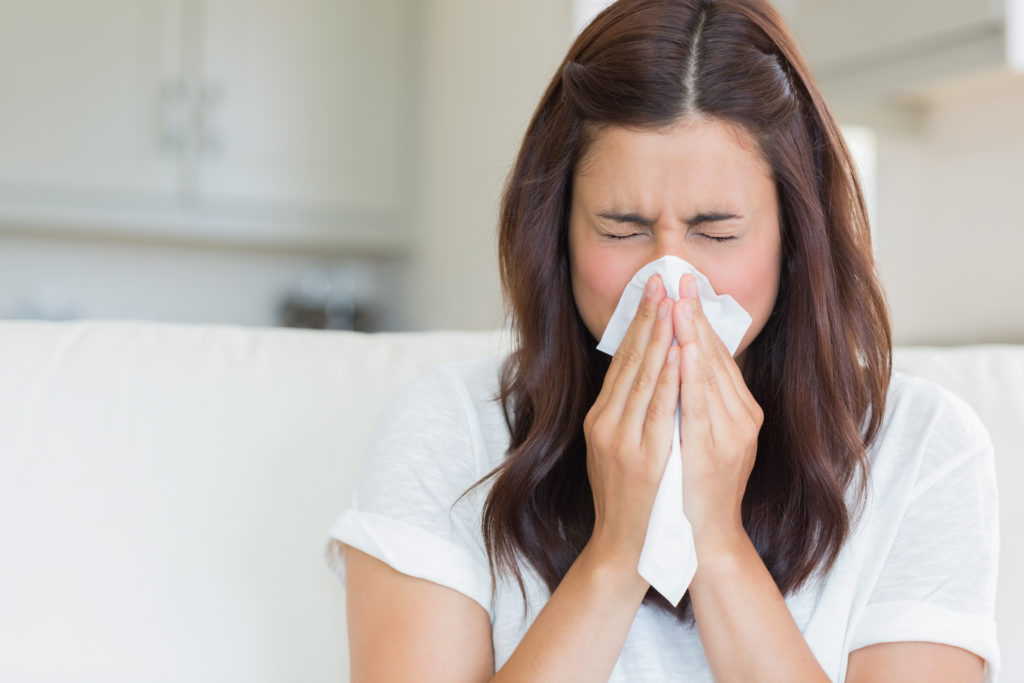February 14, 2023
As Wonderful as They Are, Antibiotics Aren’t a Cure-all
You have a sore throat, fever, nasty cough and awful congestion. In other words, you feel miserable. Naturally, you go to your primary care doctor thinking you know just what you need. A tried-and-true prescription for antibiotics should get you back to your old self pretty fast, right?
Sure, antibiotics may seem like the cure for what ails you. In reality, antibiotics aren’t always the right solution. In fact, they may not help you at all.
Just as insulin is designed to keep blood sugar levels in check, and blood pressure pills help control hypertension, antibiotics have a specific purpose. They’re meant to treat infections—but only certain types of infections.
The Battle Against Bacterial Infections
Bacteria is all around us—24/7. You can’t escape it. It’s a single-cell organism that multiplies very quickly. Most bacteria aren’t harmful. In fact, millions of bacteria live on your skin and inside your body. Some are even good for you.  They help you digest your food and fend off bad bacteria. If harmful bacteria lodges in your skin, lungs, brain, blood, intestinal tract or anywhere else, you could develop an infection.
They help you digest your food and fend off bad bacteria. If harmful bacteria lodges in your skin, lungs, brain, blood, intestinal tract or anywhere else, you could develop an infection.
You can come in contact with harmful bacteria in lots of ways. It might be lurking in your home, workplace and other environments where you spend time. You might pick it up through an infected person, animal, scratch or bug bite. You might eat or drink contaminated food or water.
Pneumonia, strep throat, sepsis (a blood infection) and urinary tract infections (UTIs) are all examples of illnesses caused by harmful bacteria that can be treated with antibiotics.
Viruses Are Immune to Antibiotics
Most colds, sore throats, coughs—even bronchitis—are caused by viruses, not bacteria. This means a prescription for antibiotics won’t do you a bit of good. Here’s the good news, though: Your amazing body fights off viruses.
Yes, the first four or five days won’t be fun, but afterward you should be in the healing homestretch. While you’re on the mend, rest and be good to yourself. Over-the-counter medications for pain, fever, cough and congestion can do a lot to relieve symptoms.
Is It Bacterial or Viral?
Knowing whether your illness is caused by bacteria or a virus isn’t always clear. Like bacterial infections, viral infections can cause fever, chills and fatigue. How do you know which is the source of your suffering?
If your care provider suspects you may have strep throat, a UTI or other illness caused by bacteria, they will collect a sample from you (throat swab or urine) and culture it. This will offer clear guidance about whether antibiotics are needed.
Miracle Medicines Takes a Hit
Nearly 100 years after Alexander Fleming, a professor of bacteriology in London, discovered penicillin, it is still heralded as a monumental milestone in medicine. Still, it was more than a decade before the life-saving antibiotic could be manufactured and actually given to the first patient.
 Since then, antibiotics have kept millions and millions of people alive who may have otherwise perished before they were available. As with most good things, though, there can be a downside. Early on, doctors found that some strains of bacteria were resistant to penicillin and other antibiotics that were added to the medical community’s bacteria-fighting arsenal.
Since then, antibiotics have kept millions and millions of people alive who may have otherwise perished before they were available. As with most good things, though, there can be a downside. Early on, doctors found that some strains of bacteria were resistant to penicillin and other antibiotics that were added to the medical community’s bacteria-fighting arsenal.
Today, the Centers for Disease Control and Prevention (CDC) has raised the alarm, saying resistance to antibiotics (also called antimicrobial resistance) is an urgent global health threat. It’s estimated that 1.27 million people worldwide died from antimicrobial resistance in 2019. The United Nations thinks that number could swell to 10 million deaths a year by 2050 if no action is taken.
In the United States, the CDC warns more than 2.8 million antibiotic-resistant infections happen each year. About 35,000 people die from them. Doctors often encounter patients with infections that don’t respond to available antibiotics.
Few New Antibiotics on the Horizon
As bacteria grows more resistant to our existing supply of antibiotics, very few new antibiotics are being developed. The last entirely original class of antibiotics was discovered in the late 1980s. Pharmaceutical companies simply aren’t developing many new ones.
Discovering and bringing new antibiotics to market is costly and takes many years. In the end, the process isn’t profitable. The World Health Organization estimates that with the slim crop of new antibiotics currently in development, we may only have eight new antibiotics within the next five years.
Pressures to Prescribe
One of the best ways to preserve the effectiveness of the antibiotics we do have on hand is to use them only when they’re really necessary. Yet, there are lots of studies that show doctors often feel pressured by patients to prescribe antibiotics—even when they aren’t suitable. Remember, when you take antibiotics for a viral infection, you may be contributing to antibiotic resistance.  Meaning, when you actually need an antibiotic, it may not work. Data from the CDC reveals at least 30 percent of antibiotics prescribed in the U.S. are unnecessary.
Meaning, when you actually need an antibiotic, it may not work. Data from the CDC reveals at least 30 percent of antibiotics prescribed in the U.S. are unnecessary.
Along with the danger of resistance, antibiotics have their own list of side effects. Many people are allergic to them. One out of five ER visits is due to an adverse event from antibiotics. Adverse reactions to antibiotics are the most common cause of ER visits for children under 18 years of age. Common side effects include rash, dizziness, nausea and diarrhea—which can be life-threatening if prolonged. Other serious side effects can include heart palpitations and chest pains—even heart attacks, especially if taken with other medications.
Your primary care doctor is devoted to helping you stay healthy. They will prescribe any necessary medications you may need to best treat your health condition.
DISCLAIMER
The information featured in this site is general in nature. The site provides health information designed to complement your personal health management. It does not provide medical advice or health services and is not meant to replace professional advice or imply coverage of specific clinical services or products. The inclusion of links to other web sites does not imply any endorsement of the material on such websites.